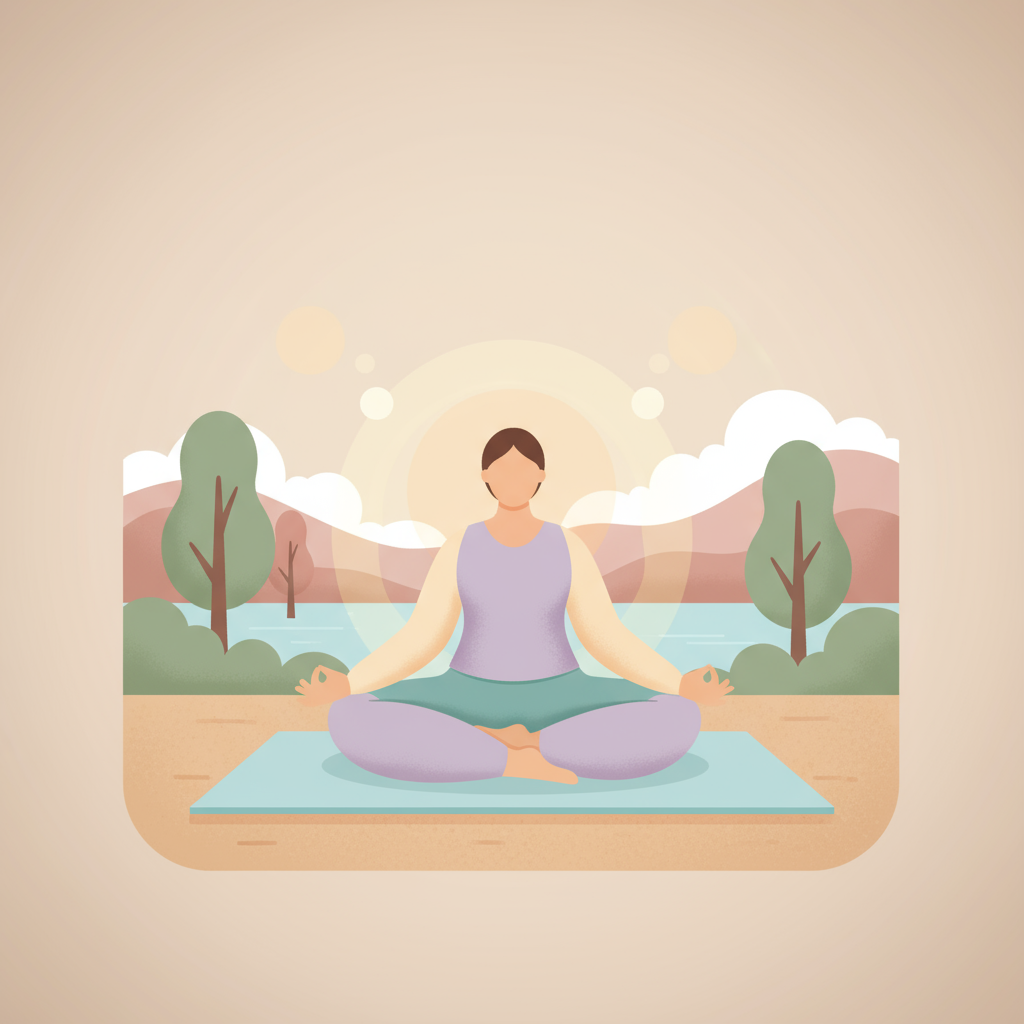Feeling stressed or anxious can make it hard to enjoy your yoga practice and daily life. When your nervous system is on high alert, your body stays tense, and your mind struggles to find calm.
Fortunately, as a yoga practitioner, you have powerful tools at your fingertips to quiet your nervous system with simple daily habits designed to soothe and regulate. These habits harness breath, movement, and mindfulness to promote relaxation and balance.
In this article, you will learn three easy habits you can start today to calm your nervous system, helping you feel grounded, resilient, and more present on and off the mat.
Your 3 Daily Habits to Quiet Your Nervous System
Habit 1 — Gentle Diaphragmatic Breathing
Why: Diaphragmatic or belly breathing engages the parasympathetic nervous system, helping to calm your nervous system naturally by slowing your heart rate and encouraging a state of rest and digest.
How: Find a comfortable seated or lying position. Place one hand on your belly and the other on your chest. Inhale deeply through your nose, allowing your belly to rise gently as you count to four. Exhale slowly through your mouth or nose for a count of six to eight, feeling your belly fall. Repeat for 5 minutes.
Cue: Practice this breathing when you first wake up, before a yoga session, or anytime you notice tension building.
Habit 2 — Incorporate Restorative Yoga Poses
Why: Restorative poses like Child’s Pose, Legs-Up-the-Wall, and supported Savasana activate the parasympathetic nervous system and release physical tension, signaling your body to relax deeply.
How: Spend 10–15 minutes each day in one or more restorative poses. Use props like blankets or bolsters to fully support your body and focus on breathing slowly and mindfully.
Cue: Use these poses in the evening to wind down or whenever you feel overwhelmed.
Habit 3 — Mindful Body Awareness and Heart Opening
Why: Mindful movement and gentle heart-opening poses stimulate the vagus nerve, which helps regulate your nervous system and improve emotional resilience.
How: Begin with a gentle seated heart opener by bringing your hands to your shoulders, inhaling to expand your chest, and exhaling as you round forward slightly. Pair this with mindful attention to sensations in your body and an easy smile to engage facial muscles.
Cue: Incorporate this habit as a warm-up to your daily practice or anytime you need to boost calm and presence.
Week 1 Schedule
| Day | Habit 1 | Habit 2 | Habit 3 |
|---|---|---|---|
| Monday | 5 mins diaphragmatic breathing morning | 10 mins Child’s Pose evening | 3 sets heart openers warm-up |
| Tuesday | 5 mins diaphragmatic breathing afternoon | 10 mins Legs-Up-the-Wall evening | 3 sets heart openers warm-up |
| Wednesday | 5 mins diaphragmatic breathing morning | 10 mins supported Savasana evening | 3 sets heart openers warm-up |
| Thursday | 5 mins diaphragmatic breathing anytime stress appears | Choose one restorative pose 10 mins | 3 sets heart openers warm-up |
| Friday | 5 mins diaphragmatic breathing morning | 10 mins Child’s Pose evening | 3 sets heart openers warm-up |
| Saturday | 5 mins diaphragmatic breathing afternoon | 10 mins Legs-Up-the-Wall evening | 3 sets heart openers warm-up |
| Sunday | 5 mins diaphragmatic breathing before sleep | 10 mins supported Savasana evening | 3 sets heart openers warm-up |
Troubleshooting
Barrier: Difficulty focusing during breathing exercises.
Fix: Use a gentle guided audio or count your breath silently to keep your focus on quieting your nervous system.
Barrier: Restorative poses feel uncomfortable or restless.
Fix: Adjust props or change poses to what feels most supportive and relaxing. Even 5 minutes is beneficial.
Barrier: Forgetting to use mindful body awareness throughout the day.
Fix: Set small reminders or link the habit to daily triggers, like starting your yoga practice or after sitting for long periods.
FAQs
Q: How long does it take for these habits to quiet my nervous system?
A: You can start feeling calmer within minutes of practicing, but consistency over days and weeks builds deeper nervous system regulation.
Q: Can I combine these habits with more active yoga practice?
A: Yes! These habits complement all levels of yoga by preparing your body and mind for calm and balance.
Q: What if my mind keeps wandering during breathing and meditation?
A: This is very common. Gently bring your focus back without judgment and keep practicing mindful awareness to strengthen your ability to quiet your nervous system.
Tracking & Motivation Tips
Keep track of when you practice your daily habits to quiet your nervous system by journaling or using habit tracking apps. Notice how you feel before and after each practice to stay motivated. Celebrate small wins like feeling more grounded or less tense. Consistency is key to retraining your nervous system for lasting calm.
Key Takeaways for Quieting Your Nervous System
Quieting your nervous system is achievable with gentle daily habits that focus on breath, restorative poses, and mindful heart opening. These practices activate your body’s natural relaxation response, helping you manage stress and improve your overall wellbeing. Incorporate these simple habits consistently, and you’ll notice increased calm, balance, and emotional resilience both on and off the yoga mat.




